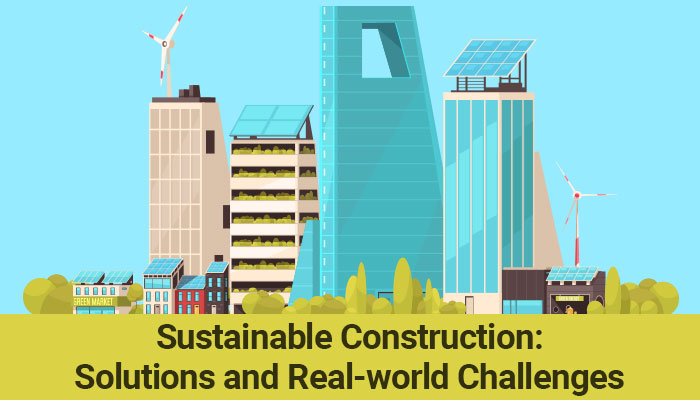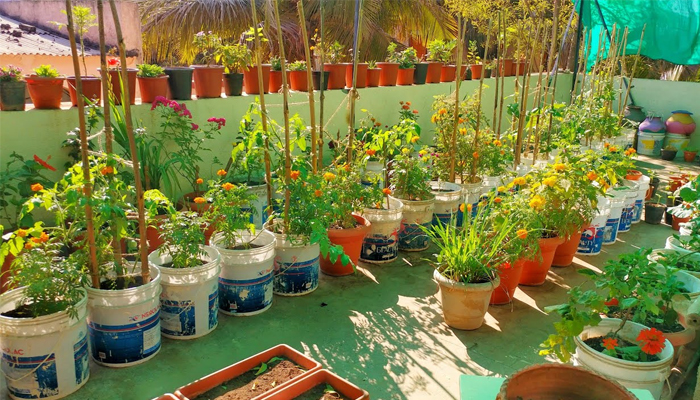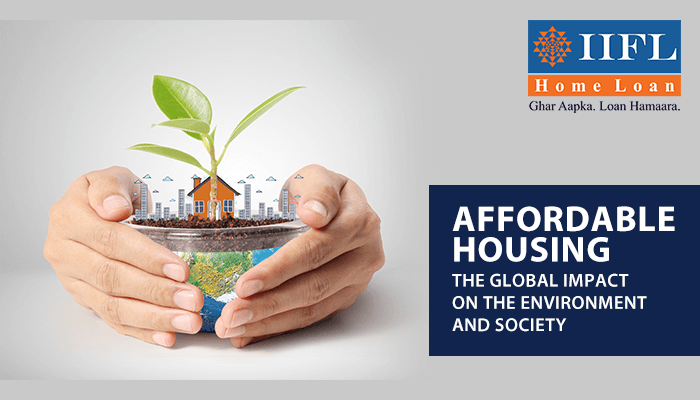Role of Sustainable Finance in Green Affordable Housing Adoption

The blog will talk about:
-
1. Sustainability and sustainable finance
-
2 .Green affordable housing
-
3. Central characteristics of green affordable housing
-
4 .Existing green affordable housing in India
-
5. About Green Rating for Integrated Habitat Assessment (GRIHA)
-
6. Indian Green Building Council (IGBC) criteria
The Green building movement in India was initiated by CII – Sohrabji Godrej Green Business Centre building in Hyderabad in 2001. As of July 2022, there were more than 8500 green building projects with a realty space spanning 8.3 billion sq. ft., most of which are registered under IGBC. Out of these projects, about 2900 projects are operational and certified by the IGBC3. Further, GRIHA has developed a new rating variant with the intent of taking sustainability to a larger audience, the variant is called, ‘GRIHA for affordable housing’ which is aligned to the Pradhan Mantri Awas Yojana.
This rating will enable low income households to reduce operational costs and GHG emissions by improved resource utilisation4. If the project is being developed under the PMAY framework and has Government approval, they are eligible for the Green Rating for Integrated Habitat Assessment Affordable Housing (GRIHA AH) rating. These projects are allowed under the priority sector lending.
Sustainability has become increasingly important, especially after the COVID-19 pandemic. Sustainable finance is just an offshoot of the Environment-Social-Governance (ESG) practice which yearns to leave a better and safer planet for the next generation. Sustainability is more than just about carbon footprint. It is an indicator of long-term business growth and sustenance.
Sustainable finance is an emerging practice, especially in the green affordable housing space, which has garnered much interest. Governments in emerging markets, including India, understand the need for affordable housing whilst balancing urbanisation, population growth, limited land resources and income disparity. Here’s a look at the role of sustainable finance in green affordable housing projects.
What is Sustainable Finance?
According to European Commission and World Bank, Sustainable Finance is the process of considering ESG aspects whilst undertaking investment decisions. This methodology of investment decision-making leads to longer-term investment into sustainable and economically viable projects.
Sustainable Finance is often confused with green finance; however, green finance focuses only on the environment, and the other aspects of social and economic viability are not included. Green finance in India is a subset of sustainable finance as it covers a variety of financial activities, including lending, with the specific objective of contributing toward sustainable ecological development.
This long-standing phenomenon was promoted for wider acceptance and adoption under the Paris Climate Agreement. The stipulation under this agreement emphasises that the parties agreeing to promote sustainable/green finance should endeavour to achieve lower carbon emissions and climate-resilient advancements.
Sustainable finance or green loans are extended to ESG-compliant development projects, including affordable housing. These loans are offered at a lower interest rate. The Government is also in favour of developing green lending facilities in emerging markets.
Sustainable Finance and its importance
Sustainable finance is integral to the evolving ecosystem. Banking practices are core to any economic system. Credit or lending is one of the very important functions in economic development. When integrated with green initiatives, it can propel into a large-scale advantage. Sustainable finance and green finance will play an integral role in the world’s transition to building a safer and better ecosystem as they channel private money into carbon-neutral projects.
Understanding Green Affordable Housing
Green Affordable Housing refers to the units of houses which are extended to the community with income below the median household income. Sustainable and green housing projects may undertake the pledge to ensure that the carbon footprint and plastic usage are minimal. They build environmentally friendly and energy-efficient homes using a range of recyclable materials. All these factors reduce greenhouse gas emissions which are harmful to the environment. Financing affordable housing is primarily carried out by traditional financial institutions. Banks and other lending institutions are keen to finance such projects, which not only focus on the upliftment of the low-income group but also remain conscious of the carbon footprint while doing so. The quantum of fund outlay for buying any house is dependent on three main factors:
-
1. Household income
-
2. Cost of housing project aligned to their needs
-
3. Other expenses, including those towards food and essentials
Affordable Housing looks to provide quality houses at a reasonable cost. Their primary objective is to keep the costs low. However, with the green initiative on the agenda, the developers try to use eco-friendly and recyclable materials and reduce wastage. They handle wastages diligently and ensure that they avoid an outbreak of infections etc., whilst doing so.
Off late, there are efforts to also provide Climate Smart Buildings (CSB), which provide thermal comfort to enable buildings to be climate resilient. The fenestration system will help reduce the heating and cooling demand by 6-11% in moderate climates and between 8%-16% in hot and dry climates2. Thermal comfort of the housing is also essential. They are also conscious of their energy and water usage. In enhancing the lives of the lower–middle-income groups, they also elevate the quality of their own lives by contributing substantially to the environment.
The central characteristics of green affordable housing are:
-
1. Standardised housing properties of similar quality
-
2. Accessibility to basic amenities
-
3. Proximity to essentials, educational institutions, hospitals, community facilities, offices/services etc.,
-
4. Optimal efficiency in terms of water and energy
-
5. Achieving cost efficiency in maintenance and operations
The characteristics provide a complex objective to the green affordable housing, wherein there is an overarching need to adopt sustainable practices with minimal additional cost to the overall project development cost. The choice of practice has to be primarily guided by the cost factor. They must exhibit optimal ESG benefits at a fraction of a cost increase.
Existing Green Affordable Housing in India
The green affordable housing initiatives in India are registered and rated by the Indian Green Building Council (IGBC). This council is a part of the CII (Confederation of Indian Industry), which was formed in 2001. By 2025, this union aims to build sustainable practices to facilitate India to become a global leader in fostering a sustainable ecosystem.
The council offers the below-mentioned services:
-
1. Rating programmes for new green buildings
-
2. Certification services
-
3. Green building training programmes
-
4. Annual flagship event – Green Building Congress with green buildings as the primary focus
-
5. To take affordable housing facilities to the masses, a new rating has been developed called the “GRIHA for Affordable Housing” which is a 100-point rating that consists of 30 criteria
The Government has emphasised affordable housing going the green way. This remains one of their primary objectives in the coming decade. IGBC Green Affordable Housing rating assesses the green features under the following criteria:
-
1. Site dimensions
-
2. Water conservation arrangement
-
3. Energy conservation
-
4. Materials conservation
-
5. Indoor Environmental Quality
-
6. Innovation and design process.
Conclusion
-
1. The adherence to the criteria is mandatory and non-negotiable
Based on the compliance of the dwelling project, the green rating is extended by the council, the adherence to the criteria is mandatory and non-negotiable.
-
2. AH Projects will be eligible under lending for priority sector
The RBI has mandated that lending to affordable housing projects will be eligible under lending for priority sector, this essentially means competent rates and seamless disbursements upon flawless documentation5.
-
3. Various levels of certifications/pre-certification
There are various levels of certifications/pre-certification based on the practices adopted by the developer. Certified, Silver, Gold and Platinum certification levels are applicable for multi-dwelling residential units where each certification level corresponds to an incremental degree of compliance with the green objective.
-
4. Cost – efficient designs for green initiatives
Many affordable housing case studies in India enable developers to improve their design and construction practices to comply with green initiatives yet remain cost-efficient.
Green financing in India is becoming increasingly popular and integral to the entire affordable housing project initiative.
Sources:
Tags
Disclaimer: The information contained in this post is for general information purposes only. IIFL Home Finance Limited (including its associates and affiliates) ("the Company") assumes no liability or responsibility for any errors or omissions in the contents of this post and under no circumstances shall the Company be liable for any damage, loss, injury or disappointment, etc. suffered by any reader. All information in this post is provided "as is", with no guarantee of completeness, accuracy, timeliness, or of the results, etc. obtained from the use of this information, and without warranty of any kind, express or implied, including, but not limited to warranties of performance, merchantability, and fitness for a particular purpose. Given the changing nature of laws, rules, and regulations, there may be delays, omissions, or inaccuracies in the information contained in this post. The information on this post is provided with the understanding that the Company is not herein engaged in rendering legal, accounting, tax, or other professional advice and services. As such, it should not be used as a substitute for consultation with professional accounting, tax, legal or other competent advisers. This post may contain views and opinions which are those of the authors and do not necessarily reflect the official policy or position of any other agency or organization. This post may also contain links to external websites that are not provided or maintained by or in any way affiliated with the Company and the Company does not guarantee the accuracy, relevance, timeliness, or completeness of any information on these external websites. Any/ all (Home/ Loan Against Property/ Secured Business Loan/ Balance Transfer/ Home Improvement Loan/ NRI Home Loan/ Home Loan for Uniformed Services) loan product specifications and information that may be stated in this post are subject to change from time to time, readers are advised to reach out to the Company for current specifications of the said (Home/ Loan Against Property/ Secured Business Loan/ Balance Transfer/ Home Improvement Loan/ NRI Home Loan/ Home Loan for Uniformed Services) loan.
 Login
Login






















